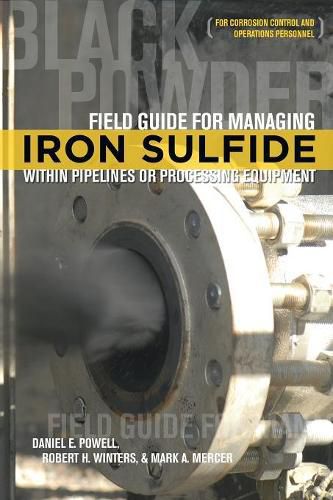Readings Newsletter
Become a Readings Member to make your shopping experience even easier.
Sign in or sign up for free!
You’re not far away from qualifying for FREE standard shipping within Australia
You’ve qualified for FREE standard shipping within Australia
The cart is loading…






This title is printed to order. This book may have been self-published. If so, we cannot guarantee the quality of the content. In the main most books will have gone through the editing process however some may not. We therefore suggest that you be aware of this before ordering this book. If in doubt check either the author or publisher’s details as we are unable to accept any returns unless they are faulty. Please contact us if you have any questions.
The Field Guide for Managing Iron Sulfide (Black Powder) within Pipelines or Processing Equipment offers practical guidance for corrosion control and operations personnel in managing black powder within their pipeline systems or processing equipment. It starts with a discussion of what is black powder and identifies health and safety considerations associated with H2S and the presence of black powder, identifying why there may be a concern. The Field Guide presents field and laboratory tests typically used to identify the presence of iron sulfide, and then discusses maintenance pigging and/or chemical treatments for removing such particulates. Several case studies are also presented.
This book was written for new corrosion control professionals and operations personnel, who are based at production facilities. It provides straightforward, practical guidance regarding what is black powder, and why it may be a concern, field tests to be conducted, follow-up laboratory test that could be ordered, and an approach for using maintenance pigging, coupled with chemical treatments, to remove accumulations of black powder. Please note the economic effect that black powder may have, not only on flow efficiency or any deleterious effects on operating equipment, but also the cost of removal.
The accumulation of black powder is becoming more widely recognized as a common concern within the crude oil and gas industry. This book is unique in that it focuses on the detection, analysis, and removal of black powder (iron sulfide) from operational systems. It offers practical advice, which corrosion control and operations personnel can use when developing their own remediation programs
$9.00 standard shipping within Australia
FREE standard shipping within Australia for orders over $100.00
Express & International shipping calculated at checkout
This title is printed to order. This book may have been self-published. If so, we cannot guarantee the quality of the content. In the main most books will have gone through the editing process however some may not. We therefore suggest that you be aware of this before ordering this book. If in doubt check either the author or publisher’s details as we are unable to accept any returns unless they are faulty. Please contact us if you have any questions.
The Field Guide for Managing Iron Sulfide (Black Powder) within Pipelines or Processing Equipment offers practical guidance for corrosion control and operations personnel in managing black powder within their pipeline systems or processing equipment. It starts with a discussion of what is black powder and identifies health and safety considerations associated with H2S and the presence of black powder, identifying why there may be a concern. The Field Guide presents field and laboratory tests typically used to identify the presence of iron sulfide, and then discusses maintenance pigging and/or chemical treatments for removing such particulates. Several case studies are also presented.
This book was written for new corrosion control professionals and operations personnel, who are based at production facilities. It provides straightforward, practical guidance regarding what is black powder, and why it may be a concern, field tests to be conducted, follow-up laboratory test that could be ordered, and an approach for using maintenance pigging, coupled with chemical treatments, to remove accumulations of black powder. Please note the economic effect that black powder may have, not only on flow efficiency or any deleterious effects on operating equipment, but also the cost of removal.
The accumulation of black powder is becoming more widely recognized as a common concern within the crude oil and gas industry. This book is unique in that it focuses on the detection, analysis, and removal of black powder (iron sulfide) from operational systems. It offers practical advice, which corrosion control and operations personnel can use when developing their own remediation programs